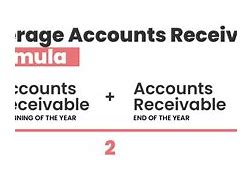
Ratio Scaling Calculator
A ratio is a quantitative relationship between two numbers that describe how many times one value can contain another. Applications of ratios are fairly ubiquitous, and the concept of ratios is quite intuitive. This could likely be demonstrated by giving a child half as many cookies as his sister. While the child may not be able to voice the injustice using ratios, the raucous protestations that would most likely ensue should make it immediately obvious that he is well aware he has received 1:2 as many cookies as his sister, conceptually, if not mathematically.
As shown above, ratios are often expressed as two numbers separated by a colon. They can also be written as "1 to 2" or as a fraction ½. The ratio represents the number that needs to be multiplied by the denominator in order to yield the numerator. In this case, ½. This is clearer if the first number is larger than the second, i.e. with the ratio 2:1, 2 can contain 1, 2 times. It is also possible to have ratios that have more than two terms.
Ratios are common in many daily applications including: aspect ratios for screens, describing maps and models as a scaled-down version of their actual size, in baking and cooking, when discussing the odds of something occurring, or to describe rates, such as in finance. If, for example, a person wanted to make 5 cakes, each of which required a 1:2:3 ratio of butter:sugar:flour, and wanted to determine the total amount of butter, sugar, and flour that is necessary, it would be simple to compute given the ratio. Increasing the ratio by five times yields a 5:10:15 ratio, and this can be multiplied by whatever the actual amount of sugar, flour, and butter are used in the actual cake recipe.
Ketahanan Terhadap Perubahan Pasar
Dengan memiliki ITR yang tinggi, perusahaan dapat lebih responsif terhadap perubahan pasar dan tren konsumen. Ini membantu dalam menghindari kelebihan persediaan yang dapat menjadi beban finansial.
Optimasi Lokasi Penyimpanan
Atur penyimpanan persediaan secara strategis untuk meminimalkan waktu pengambilan dan pengiriman. Barang yang berputar cepat harus ditempatkan di lokasi yang lebih mudah diakses.
Pengertian Inventory Turnover
Inventory Turnover adalah sebuah metrik keuangan yang mengukur sejauh mana suatu perusahaan mampu mengelola persediaan barangnya dalam suatu periode waktu tertentu. Metrik ini memberikan gambaran tentang efisiensi perusahaan dalam menjaga keseimbangan antara persediaan yang dipegang dan kecepatan menjualnya. Dalam kata lain, Inventory Turnover mencerminkan seberapa sering persediaan barang dijual dan digantikan dalam periode tertentu.
Pengertian Inventory Turnover Ratio
Inventory Turnover Ratio mengukur seberapa efisien perusahaan dalam mengelola persediaan barangnya. Rasio ini dihitung dengan membagi biaya barang yang dijual oleh nilai rata-rata persediaan selama periode tertentu. Dalam formula sederhana, Inventory Turnover Ratio = Biaya Barang yang Dijual / Rata-rata Persediaan.
Baca juga: Just in Case Inventory adalah (JIC): Arti, Cara Kerja, Strategi Optimasi
Tingkatkan Efisiensi Operasional
Perbaiki efisiensi operasional untuk mengurangi waktu pemrosesan dan pengiriman. Pastikan kolaborasi yang baik antara departemen yang terlibat, termasuk gudang, logistik, dan penjualan.
Pengukuran Efektivitas Manajemen Rantai Pasok
ITR juga memberikan pandangan terhadap seberapa baik perusahaan dapat mengelola rantai pasokannya. Dengan mengoptimalkan persediaan, perusahaan dapat meminimalkan risiko kelebihan atau kekurangan stok.
Cara Meningkatkan Inventory Turnover Ratio
Perbaiki Perencanaan Persediaan
Penting untuk memiliki perencanaan persediaan yang akurat. Gunakan data historis dan tren pasar untuk memperkirakan permintaan dengan lebih tepat. Perhatikan musim, tren, dan faktor-faktor lain yang dapat memengaruhi penjualan.
Typical Aspect Ratios and Sizes of Screens and Videos
The aspect ratio is the ratio of a geometric shape's sizes in different dimensions. In the case of a rectangle, the aspect ratio is that of its width to its height. Although aspect ratios are widely used in applications such as tire sizing, paper sizing, and standard photographic print sizes, some of the most frequent uses of aspect ratios involve computer screen dimensions, mobile phone screens, and video sizes. As such, below is a list of typical computer screen/video resolutions and aspect ratios.



